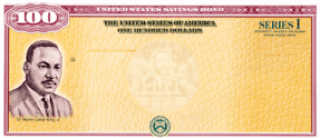 Michelle Singletary, financial writer for The Washington Post, has been recommending buying Series I Bonds for months now.
Michelle Singletary, financial writer for The Washington Post, has been recommending buying Series I Bonds for months now.
Singletary says for investors with Money to spare and who are looking for safety, inflation has been good for Series I Bonds, which the Treasury Department announced will be paying 9.62 percent until the end of October.
So, I thought I’d try it. I was apprehensive because I’d read so much about how clunky the TreasuryDirect.gov website is.
Buyers are advised to have all the needed information at hand when they set up an account: your Social Security number, bank name, and bank routing and account number. I also had to enter my driver’s license number.
I decided to buy $5,000 worth of I Bonds. I bought them in $1,000 amounts so that I can cash them in at different times, if needed.
The rates on I Bonds are set every six months. You can cash them in at the end of one year, but you’ll pay a three-month penalty for not holding them for five years.
The only trouble I had buying the I Bonds was trying to set up an account late at night. I tried twice and got the message that it hadn’t worked and I’d have to try again later. The computers may have been doing maintenance late at night.
Another slight glitch was setting a password. Mine was rejected a couple of times because it was too long. It took me about 10 minutes to figure that out.
Be sure and keep track of the account number you’re sent. It’s your user name.
I received an email for each I Bond I purchased.
I’ll need to designate a beneficiary for the I Bonds. You can only list one beneficiary on each I Bond.
What are the pros and cons of buying I Bonds?
Pros
Cons
I bonds are paying a 9.62 percent return for the current six months, but you must buy them before Oct. 28 to lock in that rate.
I’m glad I got the I Bonds purchased and the TreasuryDirect.gov website wasn’t as difficult to use as many people had described.
Originally Published on https://boomersurvive-thriveguide.typepad.com/the_survive_and_thrive_bo/
Notifications